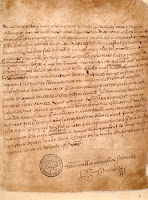Petticoats

I’m going to do a simple post today on the topic of petticoats. In my books (set in the 18th century), petticoats is the generic term for all the layers of a woman’s skirts, the outer as well as the under. By the Regency, a petticoat has come to mean a specific undergarment; a layer that goes over the stays but under the gown. It serves a couple different purposes: It adds to the opacity of the ensemble (many gowns being basically see-though) and it can add warmth (esp if it’s made out of something like a lightweight knit wool). The examples I’ve seen tend to either close in the back with Dorset thread buttons or with drawstring ties (one for the neckline and one for the waist), or they button under the arm (which was also common for habits and w alking dresses which were comprised of a skirt [with a small bodice to hold it up] and a spencer/jacket). The first image is a petticoat c. 1800 with whitework around the hem. The second is another c. 1820. You can see that the waist has move






.jpg)
